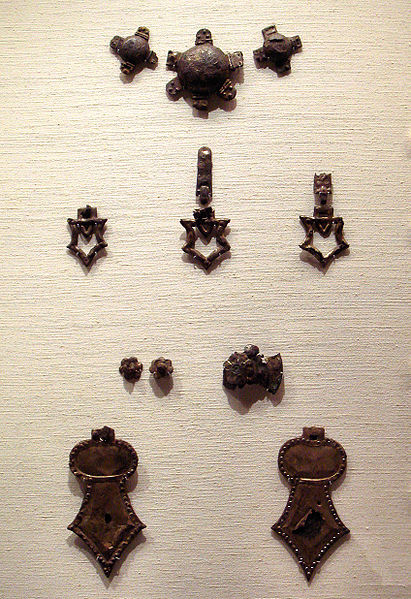The Haniwa are terracotta clay figures that were made for ritual use and buried with the dead as funerary objects during the Kofun period of the history of Japan. Haniwa were created according to the wazumi technique, in which mounds of coiled clay were built up to shape the figure, layer by layer. Haniwa can also refer to offering cylinders, not the clay sculptures on top of them as well as the "wooden haniwa" found in Kofun tumuli.
Haniwa warrior in keikō type armor, Ōta, Gunma Prefecture, c. 6th century AD. Height: 131.5 centimetres (51.8 in). National Treasure of Japan
Haniwa figure of a woman, 5th–6th century. Earthenware. Excavation point unknown. This figure is considered to represent a high-ranking woman, possibly a shaman or priestess. The figure is fragmentary: the arms are missing and, like many extant haniwa, it has been reassembled from shards.
Seated woman
Haniwa houses
The Kofun period is an era in the history of Japan from about 300 to 538 AD, following the Yayoi period. The Kofun and the subsequent Asuka periods are sometimes collectively called the Yamato period. This period is the earliest era of recorded history in Japan, but studies depend heavily on archaeology since the chronology of historical sources tends to be distorted. The word kofun is Japanese for the type of burial mound dating from this era.
Kofun-period jewelry (British Museum)
Iron helmet and armour with gilt bronze decoration, 5th century (Tokyo National Museum)
Gilded sword hilts, late Kofun period, 6th century
Reconstructed Kofun-era warehouse








